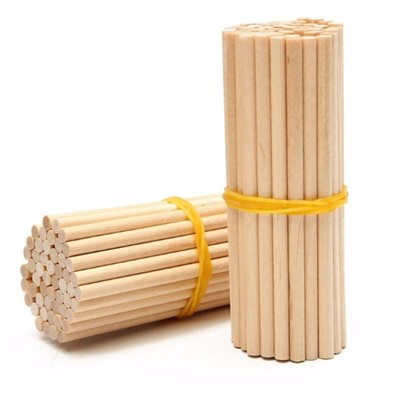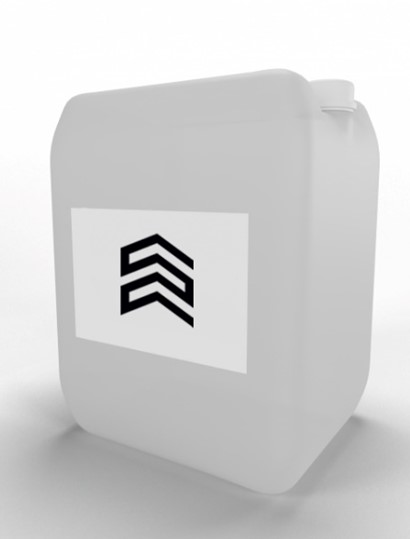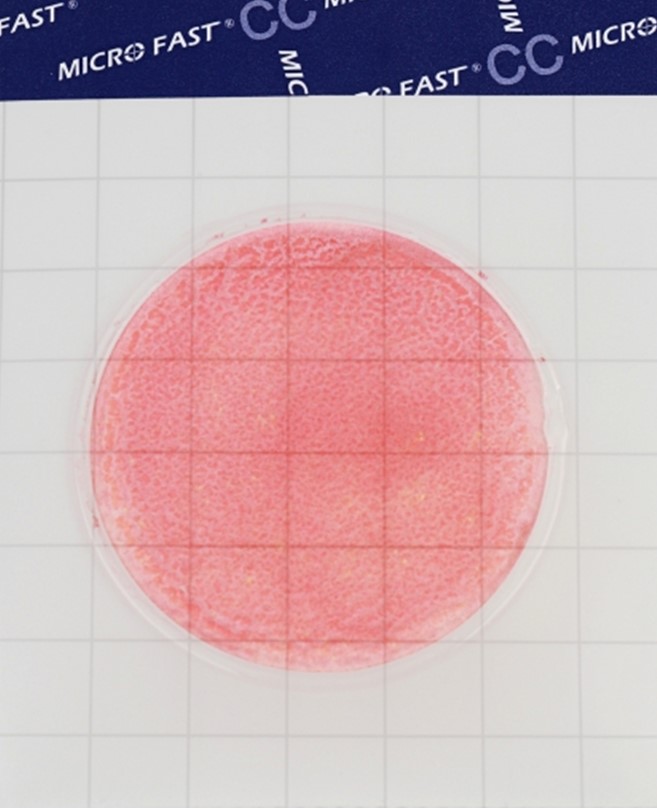Bird on the needle: Russian farmers are afraid of being left without imported veterinary vaccines

 PIONEER MEIZHENG BIO-TECH (5 in1) JC1165 / Rapid tests for the determination of the residual amount of halofuginone, flavomycin, novobiocin, flunixin, dexamethasone / prednisolone in milk, whey
PIONEER MEIZHENG BIO-TECH (5 in1) JC1165 / Rapid tests for the determination of the residual amount of halofuginone, flavomycin, novobiocin, flunixin, dexamethasone / prednisolone in milk, whey Rapid tests PIONER 5 in 1 for the determination of sulfonamides, tylosin, tilmicosin, lincomycin, erythromycin, fluoroquinolones
Rapid tests PIONER 5 in 1 for the determination of sulfonamides, tylosin, tilmicosin, lincomycin, erythromycin, fluoroquinolones
Bird on the needle: Russian farmers are afraid of being left without imported veterinary vaccines.
According to the Ministry of Agriculture, the supply of Russian livestock and poultry farming with domestic vaccines in 2023 was 30%, by 2030 it should reach 47%.
RUSSIA is increasing its own production of vaccines for farm animals and poultry, but so far there is no less concern among MEAT sector companies. Imports cover a significant part of the needs, but the fate of supplies from abroad is not completely clear, and domestic pharmaceuticals do not produce vaccines for all diseases. The problem is especially acute among poultry farms.
According to the Ministry of Agriculture, the provision of Russian livestock and poultry farming with domestic vaccines in 2023 was 30%, by 2030 it should reach 47%. In total, 297 imported and 319 domestic vaccines for animals are registered in Russia, of which 117 and 73 are used for poultry farming, respectively, according to Eduard Mailyan, candidate of veterinary sciences and independent expert on poultry farming. According to his assessment, of the 50 most popular and in demand types of live and inactivated vaccines for poultry farming at the end of 2023, 23 vaccines are not produced in Russia at all (some are at the development stage), 16 vaccines require increased production, and only for 11 vaccines the volumes meet the needs of enterprises .
The total volume of the veterinary vaccine market in Russia, including supplies of foreign drugs of 18.3 billion doses in physical volume, amounted to 39.3 billion doses last year, according to analysts from RNC Pharma, whose data was reviewed by FORBES .
With such a significant dependence on imports, the situation for livestock farmers is complicated by the fact that access to foreign-made vaccines is constantly becoming more difficult.
Difficult-to-access imports
The decline in the availability of imported veterinary vaccines was facilitated by both the actions of foreign manufacturers and Russian legislation, Forbes interlocutors say.
Since September 1 last year, the procedure for access of imported veterinary drugs to the Russian market has changed, recalls Semyon Zhavoronkov, executive DIRECTOR of the Association of Veterinary Pharmaceutical Manufacturers. “From this moment on, a Russian GMP certificate of conformity is no longer needed not only for registration of drugs, but also for each new supply,” he explains. — Last year, supplies of 180 drugs should have remained available, but by May 2024 this figure was not reached. For comparison: in 2022, an assortment of more than 700 foreign-made veterinary drugs, including more than 220 vaccines, was available in Russia.”
“The new rules in fact obligated all foreign manufacturers of immunobiological products to undergo certification for compliance with Russian rules of good manufacturing practice (GMP, Good Manufacturing Practice) and provide their vaccine strains for deposit in Russia,” adds independent expert Mailyan. “And for some, providing a strain is tantamount to disclosing a trade secret, since, in fact, after transferring the material, the vaccine can begin to be produced without the participation of the company.”
A lot of time passes between receiving a Russian GMP certificate and resuming supplies, Zhavoronkov notes. “From existing practice, we can talk about at least six months,” he emphasizes. “Since deliveries became impossible on September 1 [2023], enterprises were unable to plan the production of the necessary products, because of this, restoration takes longer than necessary for delivery and additional testing, also provided for by the new procedure for introducing veterinary drugs into civilian circulation.”
Foreign manufacturers, whose vaccines were actively used in Russia until recently, began to leave the market even before the introduction of new rules, in 2022. Mailyan, citing customs statistics, recalls that in 2022, 24.43 billion doses of poultry vaccines were imported to Russia from 13 companies: Phibro/Abic, BoehringerIngelheim, Elanco, Hipra, Ceva, Biovac, Arkolabs, MSD, Bioveta , Zoetis, Biovet/Huvepharma, Biopharm, Komipharm. But already in 2023, among those who left were such world leaders in the production of vaccines as Intervet/MSD, Zoetis, BoehringerIngelheim/Merial, Elanco/LAH/Avipro, etc. “But even for companies that have passed GMP certification, import has become more difficult due to sanctions pressure, for example, Hipra and CevaSantéAnimale,” adds the expert.
Among the currently indispensable vaccines, Mailyan names vector vaccines against infectious bursal disease, Newcastle disease, infectious laryngotracheitis, low- and high-pathogenic avian influenza, vaccines against Marek's disease serotypes 1+3, metapneumovirus infection / infectious rhinotracheitis (MPVI/IRT), viral anemia chickens (VAC), hemorrhagic enteritis of turkeys and others, including against bacterial and parasitic diseases. “As a result, important medicines have become unavailable on the Russian market,” Mayilyan concludes.
Chickens in trouble
The situation with vaccination among livestock and poultry farmers is paradoxical: on the one hand, all operating enterprises are currently provided with vaccines, but on the other, the difficult availability of drugs already creates risks that will only increase over time, Forbes’ interlocutors say.
Federal and local authoritiesregularly survey livestock and poultry enterprises, including regarding the availability of veterinary medications, primarily vaccines. “And the answer is predictable: of course, enterprises always have vaccines, since if animals are not vaccinated in time, then the enterprise can be closed,” says Zhavoronkov from the Association of Veterinary Pharmaceutical Manufacturers. “But, unfortunately, no one is interested in how optimistic farms are about the prospect of acquiring the entire range of vaccines they need, say, in three months. But here the differences begin: some still have stocks, some are experimenting and switching to other available analogues, some are using, as before, domestically produced drugs.”
There is already a shortage of effective vaccines, which could lead to a decrease in production indicators in the poultry sector, says independent expert Mailyan. For example, enterprises are beginning to experience a shortage of vaccines against Newcastle disease, adds Vasily Afonyushkin, Candidate of Biological Sciences, HEAD of the Sector of Molecular Biology of the Siberian Federal Scientific Center of the Russian Academy of Sciences. “It is also produced in Russia, but, again, there is not enough volume for all,” explains the expert. “This is just one example, and with further restrictions on the supply of imported vaccines until significant success is achieved in the domestic veterinary industry, the consequences for enterprises could be catastrophic.”
The problems are already visible. “In the first quarter of this year, we saw a slight decrease in poultry meat production, which occurred due to a decrease in the density of chicken stocking by several large companies to correct the decline in productivity due to the lack of effective vaccines last year,” comments Albert Davleev, president of the consulting company Agrifood Strategies. Difficulties with production due to a lack of vaccines were also noted last year. The unstable supply of the industry with the necessary drugs affected the results of the meat industry, reported the head of the National Meat Association, Sergei Yushin. Vaccines delivered at the wrong time and not in full will lead to interruptions in the supply of chicken meat, producers warned.
There are currently certain difficulties with the acquisition of imported vaccines, states production director of the Agroeko company Evgeniy Naydenov. “The availability of imported vaccines has greatly decreased, and domestic suppliers, unfortunately, cannot keep up with the growing demand for their products due to limited production capacity,” confirms the Cherkizovo press service. According to a company representative, there is a particularly strong shortage of vector vaccines for poultry farming and a number of vaccines that have no analogues in Russia today.
Veterinary costs account for 3% to 5% of the cost of poultry products, including 1.5-2% for vaccines, Mailyan notes, but the economic effect, depending on their quality and application technology, especially against the backdrop of the circulation of highly virulent pathogens in livestock, is much more serious. . “Unpredictably high mortality and culling, secondary bacterial infections, antibiotic flows , decrease in category, quality and safety of products - this is not a complete list of the consequences of using insufficient quantities or low quality of vaccines,” explains Mailyan.
Gray zone
One of the options for providing vaccines has become parallel imports, which a number of Forbes interlocutors call gray.
The lack of the required number of popular and effective vaccines on the market provokes the growth of the gray market of biological products and their prices, Mailyan notes. “The issue of vaccine safety is becoming more and more urgent,” warns Afonyushkin from the SFSC RAS. “The shortage of in-demand imported drugs and the insufficient volume of domestic ones lead to the emergence of counterfeits, and more and more low-quality products are being discovered on the market.”
“But we must take into account that parallel imports have intensified; batches of vaccines, with the assistance of the Ministry of Agriculture, are imported at the request of individual enterprises,” points out Mailyan. True, such a solution has its own risks and makes it difficult to assess the real shortage of drugs. “The problem is global,” a representative of one of the poultry farms in Siberia complains in a conversation with Forbes. “We really lost the opportunity to purchase imported drugs, thanks to which we were able to maintain the performance indicators we needed, and there are no alternatives on the Russian market - we were not ready for this. And the only option is parallel, or gray, import. But this, you understand, is unstable and generally dangerous, you can get charged.” According to him, the shortage of vaccines affects enterprises the more strongly, the worse the epizootic situation in a particular region. “Probably, over time, it will be possible to select a replacement for some of the European vaccines from the range of manufacturers in CHINA or SOUTH KOREA,” Afonyushkin hopes. “In the meantime, apart from gray imports, companies really have no opportunity to purchase foreign drugs.”
We are trying, but we are not coping.
Russian manufacturers of veterinary vaccines are showing some success, but they are not yet able to fully cover the needs of the industry either in terms of product range or production volumes, Forbes’ interlocutors say.
In 2023, Russian manufacturers produced 19.3 billion doses of veterinary vaccines - 3 billion doses more than in 2022, and 5 billion doses more than in 2021. The main manufacturing companies in Russia are NPP Avivak, FKP Shchelkovo Biocombine and the Federal Center for Animal HEALTH Protection (FSBI "ARRIAH" of ROSSELKHOZNADZOR). The production of avian vaccines by two Russian biofactories (FSBI "ARRIAH" and NPP "AVIVAC") last year amounted to 18.4 billion doses, Mailyan reports, which demonstrates an almost threefold increase in volumes by 2021 (6.76 billion doses). Based on the results of 2024, Avivak plans to increase the volume of production of veterinary pharmaceutical products by 31% compared to 2021, FKP Shchelkovo Biocombine - by 10 times, and the Federal State Budgetary Institution "ARRIAH" of Rosselkhoznadzor - by five times compared to two years ago.
According to a survey conducted by the Association of Veterinary Pharmaceutical Manufacturers (AVFARM) among meat producers, the latter doubt that Russian analogues will do a better job than foreign vaccines. In addition, it is not always possible to replace an imported vaccine with a domestic one with a single injection; vaccines have to be administered several times, which is expensive, stressful for animals, and generally not always possible.
Not all domestic vaccines meet the required level of quality in terms of such indicators as antigenic activity and its stability during storage, reactogenicity, immunogenicity and protectiveness. “When using them, experts and consumers periodically note unstable results,” says Mailyan.
“It’s difficult to say for sure how competitive domestic vaccines really are,” Zhavoronkov from AVFARM doubts. — You can often hear the thesis about more active marketing of international manufacturers. But marketing is only a small part of the work; the real work is to prove the effectiveness of the drugs in practice, to ensure high economic indicators of agricultural production and the safety of livestock. Here the characteristics of the drugs objectively influence the results.”
Manufacturers still use Russian vaccines, but for all Forbes interlocutors, domestic drugs account for no more than 50% of the total volume.
“If we consider the ratio of the share of imported and Russian vaccines based on the number of doses used, then ours is approximately 50/50,” says Yuri Dyachenko, director of the department of pig breeding and feed production of the Agropromkomplektatsiya Group of Companies. According to him, in the future it is planned to change this ratio in favor of Russian drugs, but only after his company tests the use of new vaccines.
“We use both imported and domestically produced vaccines,” says Naydenov from Agroeko. — As for domestic vaccines, not all analogues of the necessary drugs are available in sufficient quantities, and their quality is still inferior to imported ones. The proportion of imported vaccines we currently use is the majority. The most important for us remain antiviral and antibacterial vaccines for sows, as well as circovirus vaccines for piglets.”
“Today, more than 50% of the vaccines we use are domestically produced,” said the press service of the Cherkizovo group. “We are actively interacting with ARRIAH and some other domestic manufacturers, work with them is going quite successfully.”
“Our country produces a considerable volume of vaccines, another thing is that we are probably still overestimating our capabilities in the field of import substitution,” concludes Afonyushkin from the SFSC RAS. “But so far the country simply does not have sufficient capacity and scientific base, thanks to which it would be possible to produce everything that is necessary to supply livestock enterprises.” The full cycle of creating one vaccine, Mailyan recalls, takes from three to five years, and due to the lack of or loss of proper experience at enterprises, even longer.
In addition, according to Afonyushkin, problems with components for domestic vaccines are getting worse - it is necessary, and not without difficulty, to import imported adjuvants, SPF embryos, and cell cultures. Due to supply interruptions, the quality of drugs may decrease and even the volume of their production will be reduced.
The process of switching from imported vaccines to Russian ones requires more time than expected by the state regulator, Mailyan believes. “Domestic production has potential,” Afonyushkin is sure. “However, there is a lack of funding and well-coordinated work of research institutes, which could be engaged in the knowledge-intensive small-scale production of some vaccines.”
Read together with it:
- The Russian Ministry of Agriculture proposes extending veterinary regulations until 2032.The extension includes regulations for the prevention and eradication of diseases such as bradsot (Clostridium septicum), trichinosis (Trichinella), blackleg (Clostridium chauvoei), and porcine reproductive and respiratory syndrome (PRRS). The proposed changes stipulate the following new deadlines: for bradsot and trichinosis - from March 1, 2......
- A fire at the Merci Agro Sakhalin pig farm killed 1,500 pigs, but pork production will not be affected.Deputy Minister of Agriculture and Trade of the region Inna Pavlenko noted that other pig farms will help compensate for the loss. Merci Agro Sakhalin plans to restore its capacity and livestock, which will help avoid a pork shortage on the local market. The restoration will be funded by insurance payments, and veterinarians have already analyzed the condition of the remaining animals and determin...
- Belstat reported how much grain, milk, meat, and vegetables are produced in Belarus per capita.November 14, MINSK . Belarus produces 913 kg of grain, 958 kg of MILK, 341 kg of potatoes, and 304 kg of vegetables per capita, according to a review by the National Statistical Committee for the Day of Agricultural and Processing Industry Workers, BELTA reports. The country also produces 78 kg of fruits and berries, 147 kg of livestock and poultry (slaughter weight), and 4......
- The IEA sees a risk of a decline in oil production in Russia due to sanctions.The IEA sees a risk of reduced oil production in RUSSIA due to US sanctions , but maintains its production forecast. According to the IEA, Russian oil exports will remain unchanged.There is a "significant downside risk" to Russia's oil production forecast due to US sanctions, the International Energy Agency (IEA) said in a report.BLOOMBERG . The agency's experts believe that the latest US sanction...
- UniCredit заявил о галактических усилиях из-за санкций против РоссииUniCredit старается не нарушить «более 15 тыс. санкций», а также не «совершать ошибки», которые позволят изъять его активы в России, заявил гендиректор. После начала военной операции банк начал рассматривать возможность ухода Итальянский банк UniCredit прилагает «галактические усилия», пытаясь соблюсти международные санкции в отношении своего российского подразделения. Об этом заявил генеральный д...
























































